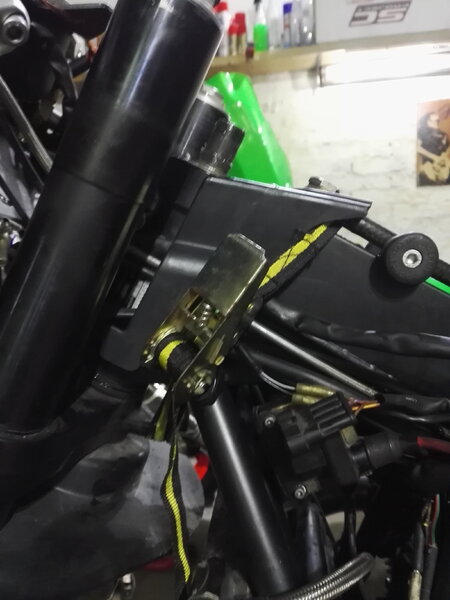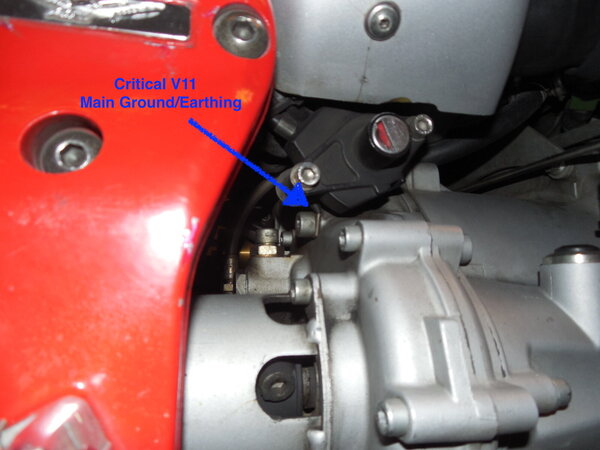
audiomick
Members-
Posts
2,532 -
Joined
-
Last visited
-
Days Won
50
Content Type
Profiles
Forums
Events
Gallery
Community Map
Everything posted by audiomick
-
at Stein-Dinse: https://www.stein-dinse.com/en/item-2-1021625-01634000-.html from this parts diagramme: https://www.stein-dinse.biz/etkataloge/etkataloge.php?l=de&h=MG&m=222&t=5455#a177240 at Wendel: https://wendelmotorraeder.de/hinterrad-v11-03-04-corsa-ex-30_3006_300602_30060204_3006020410_300602041024.html part no. 6 and a parts list at Guzzitek.org : https://guzzitek.org/parts_list/gb/1100/V11LM_Nak_RC_Cat_2003_122002_PL.pdf part no. 6 on page 116 So it looks like your part number is correct. Incidentally, I didn't put in three links to be a smart-arse, but rather to give an idea where one can go to check on part numbers. PS: docc beat me to it, but I worked so hard on this I'm posting it anyway... PPS: I read somewhere about spacers to fill out the missing length on the spacer. Don't know if it was here or somewhere else. That might be an option, if you can figure out how much too short yours is. Apparently a bit too long is not as bad as a bit too short. Having said that, I can imagine that an additional short spacer in there would be an absolute pain to install.
-
Today I took the front end off to have a look at the steering head bearings. Not that there were any signs of trouble, but I wanted to see how much grease was in there. Turns out adding a bit more wasn't such a bad idea. Bright idea of the day (or week, or month...) obvious really, to hold it in place whilst putting it back together. But I was a bit chuffed that I thought of it in the heat of the moment and all by myself, and how well it worked. I poked around and looked at a couple of other things as well. All part of getting to know the bike, and being able to contemplate longer trips without worrying too much if the wheels are about to fall off.
-
From the album: audiomick
-
-
-
Yeah, thought it must have been fairly long. Thanks. Looks like your mate John did a very good job.
-
Thanks docc. I had seen that, but forgotten. And yes, gorgeous.
-
Very nice photo. If you would care to oblige, I'd be interested in knowing focal length, f-stop, exposure time and ISO. Getting back to motorcycles, after 6 years you pulled a more than 50 year old motorcycle out of the shed, kicked it in the guts, and rode it around the block? Go on, tell us the full story. I'm curious for one...
-
Just tried it myself. It's about 20 past midnight on a Saturday night here. Your answer 45 minutes ago would have been about 11:35 pm here. I can get to the home page without a bother, but the shop wont open. Given that it is the middle of the night on Saturday night, I reckon they're probably dicking around with the internet shop on the assumption that no-one would be stupid enough to try and access it right now. If you're really interested, try it again in about 36 hours or so. Not important, though.
-
That'd be these, right? https://shop.held.de/en/clothes/functional-underwear/1010/infinium-skin?number=022230-00-1-DM6 Interesting. The shop I prefer to buy my stuff at carries that brand almost exclusively. Seems to be good stuff. The only problem I have with it is the name itself. It actually is the surname of the boss (and probably owner...) of the company. However, it means "hero", and I feel a bit odd running around in bike gear that has "hero" written all over it.
-
I found this just now: https://www.kardanwelle24.de/kardanwellenkomponenten/kreuzgelenke-kreuzgarnituren/kreuzgelenk-kreuzgarnitur-fuer-quad-und-andere-anwendungen-22-x-50-2-mm/a-3339 Looks like the right size, and "Zentralschmierung" should mean it has a central grease nipple. Hmmm.... I also have a tip for a place that re-conditions drive shafts. That would include balancing.
-
I may just get back to you on that. Depends on how I get on here... When are you back at home?
-
ANSWERED Front driveshaft protection collars: no differences
audiomick replied to docc's topic in Technical Topics
Well done, that man. Wouldn't have thought of that myself. Thanks very much. -
Nothing wrong with that, mate.
-
Have one for me too, mate. Shame to let it go to waste when the bottle is open...
-
Might be hard to tell what is too much, though. There is a lot of pressure change going on in there even when everything is running absolutely normally.
-
Today's programme: On the way to the garage, I went past a local ironmonger shop and picked up a 14 mm Hex key 1/2" drive socket. When I got to the garage, I discovered that it didn't fit into the end of the axle. Closer inspection revealed that some ham-fisted moron had belted the end of the axle so hard with a steel hammer that the socket was deformed inwards, and the head of the axle was deformed outwards so much that it was stuck in the swing arm. A bit of controlled violence on my part with a copper hammer and a block of wood got it out, hopefully without bending anything. Incidentally, the nut on the other end of the axle was definately no where near 120 NM tightening torque. Further: one of the wheel bearings is pretty grotty, and both the swingarm bearings. The front uni-joint doesn't feel good. It has a "stop" in the middle in one direction, sort of like what happens to head-stem bearings when they start going west. And the rear shock looks like it is leaking. On the good side, the front torque arm bolt was nicely greased and looks good as new, and the "hidden" roller bearing in the final drive also looks good. I was worried about the swing-arm bolts as I took them out; they both felt 'orrible. However, a bit of patience and working the threads back and forth with liberal applications of Ballistol got them cleaned up. Does anyone happen to know a manufacturer and part number for the uni-joints?
-
ANSWERED Front driveshaft protection collars: no differences
audiomick replied to docc's topic in Technical Topics
@docc I ended up taking mine off today. 2002 Le Mans, long frame. The front collar has the same dimensions as what you have quoted here for yours. -
ANSWERED Front driveshaft protection collars: no differences
audiomick replied to docc's topic in Technical Topics
Yes, I'm aware of that. One has to be absolutely sure that the bolt lines up with the thin spot on the shaft. -
ANSWERED Front driveshaft protection collars: no differences
audiomick replied to docc's topic in Technical Topics
Yesterday I read through two very long threads here. What I noticed is that practically no-one stipulates whether they had or have the bike on the side-stand or on some kind of lift. For the record: my V11 Le Mans, built in 2002, long tank, wrinkle paint on the motor, black gauges, was on a Becker lifter when I was looking at the front grease nipple situation. So the back wheel was off the ground, and the angle of the front uni-joint was as "open" as it can get without undoing screws. I had the feeling that I maybe could have got onto the front nipple. Grease gun has a straight connector, but a flexible hose. In the end, I decided not to pursue it. Taking out the wheel is a good idea anyway, as there are a couple of other things that would benefit from being looked at. @docc, the collar in your photo doesn't seem to have any holes in the sides of it. Mine does, such that I could probably undo the pinch bolts without removing the collar. I'll be in the garage later, and will try and measure the collar in situ, but don't really expect to see numbers different from what has already been quoted here. A thought came to me: maybe the collar is the same, but Guzzi used a different nipple on earlier models compared to the later ones. I.e. they figured out it was a bastard to get to, and changed to a different nipple. -
Yes, I will. I noticed there is also not much room around the front tank mounts, and lots of big fat plugs right there. Ah, so it is a 14mm. I measured it as best I could with a vernier gauge, but I was probably not that accurate. Thanks.
-
Today: Got the new hose in for the engine ventilation. Surprisingly awkward to change it, but I'm cautiously optimistic that this was really the reason for the oil on the bottom of the motor. We'll see... Started sorting through the wiring loom. The way it was laid in looked like an experiment in macrame. In the process of doing that I established that, firstly, I didn't have enough long, black cable ties to finish the job and, secondly, the throttle cable needs renewing, so there is no point in binding it all up again anyway. I'd most likely need to undo at least some of it to get that done. Started to take out the rear wheel so I could have a better look in around the swingarm and drive-shaft. Established that I need a 13mm Allen key to get the axle out, which I don't have. Tried out the new grease gun on the two grease nipple that one can get to. I'll be looking around the forum this evening for the posts about getting on to the nipple at the front. I know they are here, I've seen them.... Tomorrow is an new day with exciting possibilities and endless potential ...
-
I'm not in the garage yet today, but on the way, so today I've not done anything yet. Yesterday I started in on the rubber pipe directly under the frame rail for the motor ventilation. Currently, the Le Mans is on the lift with all the bodywork removed, and the tank and airbox, and I'm thinking about what else I should be having a look at while I'm in there. The "wheels off" and "tank off" topics from here are both available on the old laptop that I have designated as the "garage computer" for Guzzidiag, so I suppose I'll be working through them, more or less. Good is, I've got a couple of weeks more holidays, and the weather here is fairly ordinary at the moment.






